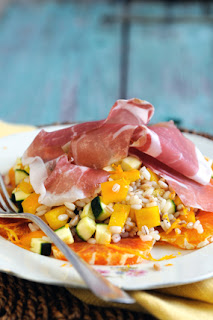There’s a little known valley nestled in the foothills of the Alps between Lake Como and Lake Lugano. It’s called the Val d’Intelvi and it’s the place where I come when I need to get away from the crowd. In that respect I’m in good company. George Clooney was known to drive up here on his Harley Davidson from his house in Laglio on the shores of the lake. I know because many of the local bars and restaurants have a picture of George hanging pride-of-place on their wall, a memento of his visit.
Relatively under-populated, the Val d’Intelvi is as far removed from the hustle and bustle that has come to characterise life below by Lake Como. Dominated by pine and beech forests, open pastures and peaceful villages, every time I visit I feel myself taking a step back in time. The winding mountainous road takes me past a series of charming largely unspoiled mountain villages. The Romanesque churches stand out, the legacy of the so-called Maestri Comacini, a group of master craftsmen, painters and sculptors who worked in the valley in the era of the Renaissance.
Arriving in Lanzo d’Intelvi, a small town at the northern end of the valley, I take to a good pair of hiking boots and begin the ascent to the Sighignola, known as the ‘Balcony of Italy’ (alt 1324 mt.). It's a beautiful day and the walk will take about ninety minutes, depending on the snow. At the summit I’m rewarded with a magnificent view of Lake Lugano, the Alps, the plains of Lombardy and what I wanted most, complete solitude. There used to be a bar pizzeria here but it has since closed down. People stopped coming – perhaps it was too much effort. George was here though. I remember seeing his picture on the wall the last time I enjoyed a plate of polenta condita (a local dish of soft polenta covered in melted taleggio cheese topped with an egg) here.
It’s a shame because there’s nothing like a long hike in the snow to sharpen the appetite. Not to mention, the polenta was very good. Luckily, half way down the mountain there’s a charming mountain lodge run by an old friend, Fabio. Fabio takes considerable pride in his food, serving little that he doesn’t either produce himself or is grown, sourced or produced locally. Whenever I visit I always opt for a platter of affetatto and a carafe of his house red.
A platter of mixed affitati (mixed cured meats) is practically the national starting point for a good meal in Italy. At its very best, it can constitute a meal in its own right. The secret to making a good affetatto is twofold – keep it simple and keep it local. It doesn’t cease to amaze me how many restaurants (particularly those catering to the tourist trade) in different parts of the country content themselves with serving Parma ham and lardo di colonnata. Why they do so: because being the two most recognised cured meats, it’s the easy option. I live in Emilia, arguably home to the best cured meat products in the country. However, when I travel to the Alps, I don’t want to see even the merest evidence of Prosciutto di Parma, Piacentine salami or culatello on my plate - however good these things may be. What I want is local!
Fabio’s platter of affetatto is testament to how it should be done. I’m presented with a large platter of bresaola, cooked salami, a locally cured game salami, lardo, a slab of nostrano (local) cheese and crostini with black truffle paste. Everything, except the cooked salami and the black truffle paste, was sourced in the surrounding valley. The salami and the truffle spread he made himself. The only thing missing is George himself!












